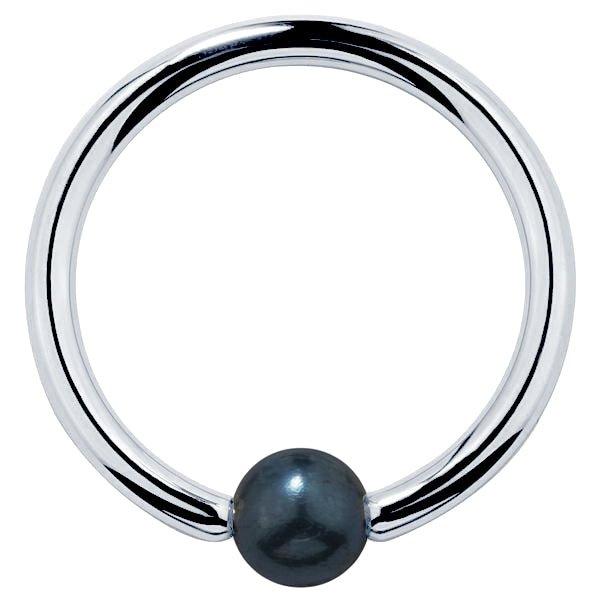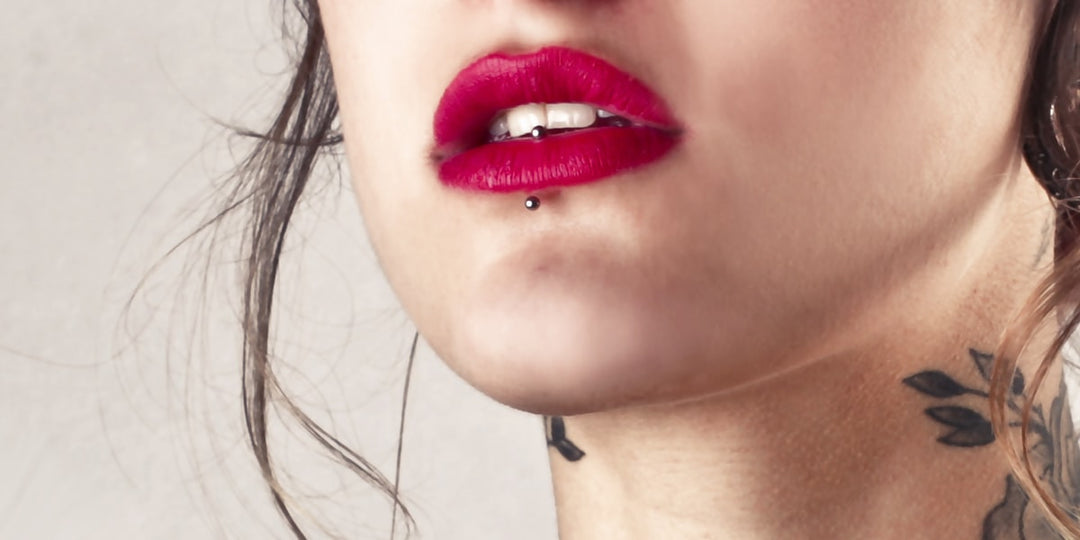The Smiley (Frenulum) Piercing: Everything You Need To Know


The smiley piercing (also known as the frenulum piercing) pierces the flap of tissue that connects the inside of your upper lip with your upper gum. Need help finding it? Keeping your lips closed, stick your tongue straight upward in front of your teeth. You should feel a thin line of skin between your lips and your gums. That’s your frenulum.
The smiley piercing is so-named because it won’t be seen unless you smile. The subtle surprise makes this piercing a fun choice for those who want an oral piercing that’s more low key than other lip and mouth piercing variations.
Since the frenulum is so thin, many people can’t get this piercing. It also has a greater risk of being torn out or rejected, since the skin is so thin.
This piercing won’t be for everyone, so it’s important to know the entire smiley piercing process before you decide to get one yourself. Here’s everything you need to know.
How Much Do Smiley Piercings Hurt?
You might think that since the frenulum is so thin, this piercing would hurt less than other piercing types. In actuality, piercings through thicker skin tend to be less painful than piercings through thinner tissue. You’ll feel a sharp pain when piercing your frenulum, but it will be fast.
Most say that the smiley piercing hurts more than other lip piercing types and less than a cartilage piercing.
Smiley Piercing Healing Process
You can expect to spend 4 - 12 weeks on healing. The mouth heals quite quickly, but it’s also home to tons of bacteria, so proper aftercare is key to quickening your healing time.
Aftercare Rules
The healing process for the smiley piercing isn’t too difficult. Your biggest challenges will be keeping your mouth clean and avoiding snags to the jewelry. Here are some tips to help you through the healing process.
- Rinse your mouth with saline solution or a sea salt rinse 2 - 3 times daily. The location of the smiley piercing will preclude you from conducting a saline soak like you would with other piercings. Instead, rinse your mouth with a saline or sea salt rinse, making sure to spend extra time soaking the frenulum area. There are rinses that you can purchase that are created specifically for oral piercing aftercare. You also need to make sure that you maintain proper oral hygiene throughout healing.
- Be careful when you eat. The location of the smiley piercing might pose a bit of a learning curve when it comes to eating. You don’t want to snag or irritate your piercing, but since initial jewelry will need to be large enough to accommodate swelling, avoiding snags could be difficult. In the first few days, stick to soft foods until you’re used to the new jewelry.
- Try not to play with the jewelry. You should never touch a healing piercing. Moving the jewelry too much could cause piercing rejection, and your hands harbor harmful bacteria. You also need to be careful not to play with your jewelry with your tongue. It will be tempting, since you won’t be used to the new piece, but you must make the conscious decision to leave your jewelry alone during healing.
- No kissing. Your mouth harbors enough harmful bacteria without adding the saliva of your partner. Closed mouth smooches are fine (as long as they’re gentle), but you should refrain from kissing of the French variety until your piercer has confirmed that your frenulum has fully healed.
Smiley Piercing Jewelry Styles
The best part about this piercing is the jewelry that pops out when you smile.
When you first get pierced, you’ll probably be fitted with a captive bead ring. These hoop styles are easily inserted, which makes them a popular starter jewelry choice. The small bead will peek out below your lips when you smile. After you’ve healed, you can choose captive bead rings with gemstones for an extra sparkle.
Circular barbell jewelry are also a popular option. The two beads at the end really make this piercing stand out when you smile.
The last jewelry option you’ll have is a seamless ring. This is great for those who chose the smiley piercing for its subtlety.


Related Products
View allWhy Shouldn’t I Get A Smiley Piercing?
The frenulum is naturally thin, and many people can’t get this area pierced. If your frenulum isn’t the right size for piercing, your piercer can give you other options.
You should wait to get a smiley piercing if you currently have braces. It’s been done, but braces are just one more thing that your new jewelry can snag on, so it’s better to wait until the hazard has been removed.
If you suffer from receding gum lines, gum disease, enamel wear, or other oral issues, then you shouldn’t get this piercing. The jewelry will rub against your teeth and exacerbate these issues.
This is not a permanent piercing. The frenulum is so small, and the area sees a lot of movement, so the piercing will eventually be rejected. It can last a few years, but many say that theirs only lasted one. If you want something that’s fun and temporary, then this piercing is great, but if you want it to last a long time, then you should opt for another piercing choice.
FreshTrends Tip
Use saline solution or a homemade sea salt solution to clean your piercing 2 - 3 times daily.
How Much Will It Cost?
Smiley piercings cost around $30 - $90. You want to make sure that your piercer uses fully sterilized tools. This is always an important consideration, but in oral piercings, where bacteria is already a massive risk, you want to make sure that you’re setting your smiley piercing up right.










